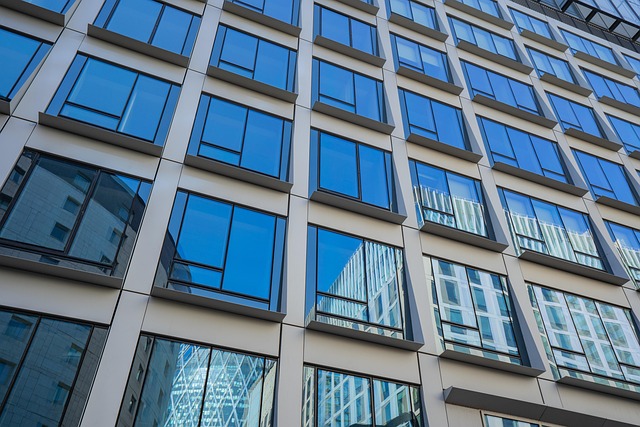Air curtains for industrial doors are vital for maintaining optimal environments in warehouses, factories, and cold storage facilities, offering robust protection from drafts, dust, pests, and weather while enabling smooth traffic flow. Hybrid power systems, combining traditional electricity with renewable sources like solar energy, enhance operational efficiency and sustainability. Solar-assisted air curtains reduce energy costs and carbon footprints, ensuring uninterrupted climate control. Tailored to specific needs, these advanced systems balance energy efficiency with stringent climate requirements, proven effective through successful case studies in manufacturing and warehouse management.
Air curtains for industrial doors are essential for maintaining energy efficiency while controlling air exchange. This technology prevents the loss of heated or cooled air, enhancing indoor comfort and reducing operational costs. By integrating hybrid power systems with solar assistance, these air curtains offer sustainable and cost-effective solutions for industrial facilities. This article explores the benefits of hybrid power, discusses design considerations, presents case studies, and delves into the optimal implementation of solar-assisted air curtains for industrial doors.
- Understanding Air Curtains for Industrial Doors: Their Role and Benefits
- The Advantages of Hybrid Power in Industrial Applications
- Integrating Solar Assistance into Air Curtain Systems
- Design and Technical Considerations for Optimal Performance
- Case Studies: Successful Implementation and Results
Understanding Air Curtains for Industrial Doors: Their Role and Benefits

Air curtains for industrial doors play a pivotal role in maintaining an optimal environment within warehouses, manufacturing units, and cold storage facilities. These heavy-duty air barriers act as robust industrial door protection, preventing external elements from penetrating while allowing smooth traffic flow. By creating a powerful air barrier at the entrance, they effectively seal off large openings, acting as warehouse entrance barriers that safeguard against drafts, dust, pests, and even extreme weather conditions.
Moreover, their strategic deployment offers significant advantages in industrial climate control. They aid in maintaining temperature-controlled environments, ensuring energy efficiency and cost savings. In manufacturing settings, where loading dock protection is paramount, air curtains provide a reliable solution by keeping out unwanted elements while facilitating quick material handling operations. Their versatility extends to various applications, making them indispensable components in modern factory door systems, catering to diverse needs from cold storage entrances to bustling manufacturing floors.
The Advantages of Hybrid Power in Industrial Applications

The adoption of hybrid power in industrial applications offers several advantages that significantly enhance operational efficiency and sustainability. By combining traditional electricity with renewable sources like solar energy, hybrid-powered systems such as air curtains for industrial doors provide a reliable and eco-friendly solution. This dual approach ensures uninterrupted door protection and climate control, even during periods of high demand or grid instability.
For instance, heavy-duty air curtains installed at warehouse entrances, loading docks, or cold storage facilities can now be powered by solar assistance, reducing energy costs and carbon footprints. This integration allows for efficient industrial door systems that offer the same robust performance as conventional models but with improved energy efficiency. Such innovative solutions are particularly beneficial in manufacturing environments where large opening barriers and factory door systems must maintain optimal conditions while minimizing operational expenses.
Integrating Solar Assistance into Air Curtain Systems

Integrating solar assistance into air curtain systems for industrial doors offers a sustainable and efficient solution for maintaining optimal conditions within facilities. By harnessing the power of the sun, these advanced systems can enhance energy efficiency, particularly in well-lit outdoor areas or warehouses with ample sunlight exposure. Solar panels are strategically placed to capture maximum daylight, which is then converted into electricity to supplement the air curtain’s operation. This innovative approach not only reduces reliance on conventional energy sources but also contributes to a facility’s overall environmental sustainability goals.
The benefits extend beyond ecological advantages; solar-aided air curtains provide enhanced industrial door protection, creating effective warehouse entrance barriers, manufacturing air barriers, and heavy-duty loading dock protection. They are ideal for cold storage entrances, large opening barriers in factories, and other areas requiring stringent climate control. This technology ensures a dynamic balance between energy efficiency and robust industrial door systems, catering to the demands of modern manufacturing and logistics operations.
Design and Technical Considerations for Optimal Performance

Designing and implementing a hybrid-powered air curtain for industrial doors requires careful consideration to achieve optimal performance. The system should be tailored to address specific needs, such as the size of the opening, the expected airflow requirements, and environmental conditions like temperature and humidity. Key technical aspects include selecting robust materials that can withstand frequent usage and harsh environments, ensuring proper sealing to minimize air leakage, and integrating solar panels for energy assistance. This combination not only enhances energy efficiency but also reduces operational costs, especially in areas with consistent sunlight exposure.
Furthermore, incorporating advanced control mechanisms allows precise adjustments to the air curtain’s performance based on real-time conditions. Smart sensors can detect door openings, adjusting airflow accordingly to maintain industrial climate control while minimizing energy waste. These features are particularly beneficial for warehouse entrance barriers, manufacturing air barriers, and cold storage entrances, where efficient loading dock protection and factory door systems are paramount. Large opening barriers demand robust solutions that can provide continuous protection without compromising on energy efficiency.
Case Studies: Successful Implementation and Results

In numerous case studies, hybrid-powered air curtains for industrial doors have demonstrated significant advantages in both performance and sustainability. One successful implementation was in a large manufacturing facility where heavy duty air curtains were installed at several warehouse entrances to act as effective loading dock protection. The system, powered by a combination of solar energy and a backup battery, reduced energy consumption compared to traditional electric-only models while maintaining optimal industrial climate control. The air curtains not only prevented the entry of unwanted elements but also significantly lowered operational costs through their energy-efficient design.
Another notable example involves a cold storage entrance in a food processing plant. The hybrid system was able to maintain a controlled environment, ensuring product quality and safety. By utilizing solar assistance, the facility achieved remarkable industrial door protection without compromising on environmental friendliness. These case studies underscore the versatility and benefits of hybrid-powered air curtains for various applications, including factory door systems, making them an increasingly popular choice in modern manufacturing and warehouse management, where both robust protection and energy efficiency are paramount.
Hybrid-powered air curtains for industrial doors, leveraging solar assistance, represent a significant advancement in energy-efficient door solutions. By combining the benefits of both renewable energy and conventional power sources, these systems offer optimal performance, reduced operational costs, and minimal environmental impact. Integrating solar technology not only enhances sustainability but also provides a reliable backup during periods of low sunlight or power outages. Through careful design and technical considerations, as highlighted in this article, hybrid air curtains can significantly improve industrial facilities’ energy efficiency while maintaining high-performance standards for their doors. These systems are a promising step towards a greener future for industrial operations, ensuring both functionality and environmental stewardship.






